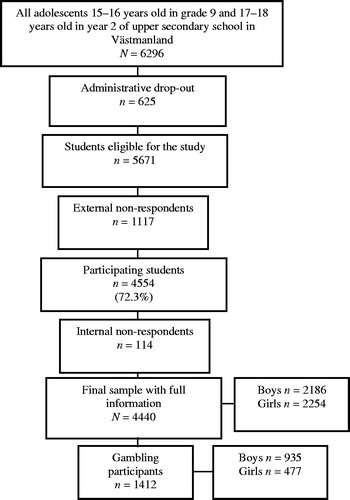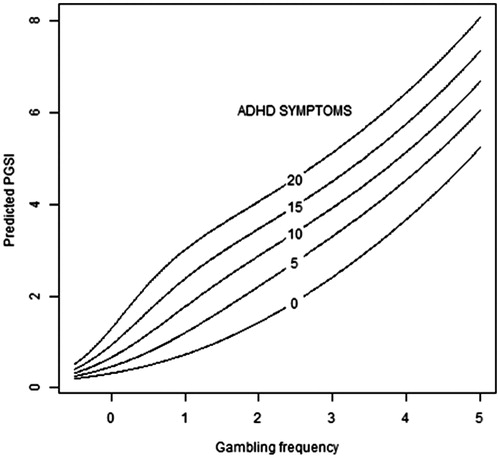Figures & data
Figure 1. Flow chart of the study population. Administrative drop-out refers to students from classes or schools that did not participate in SALVe 2012. External non-respondents are students who were absent on the day of data collection and did not return their questionnaire by mail or who declined to participate. Those who did not sufficiently complete the questions for the present study were referred to as ‘internal non-respondents’.

Table 1. Descriptive statistics for the sample of adolescents aged 15–18 years.
Table 2. Kendall’s Tau (and Cramer’s V for sex) correlations between study variables.
Table 3. Zero-inflated negative binomial regression analysis, adjusted for an excess of zero values for associations between investigated variables; dependent variable: PGSI.
Figure 2. Illustration of the association between gambling frequency and the Problem Gambling Severity Index (PGSI). The expected degree of gambling problems in the study sample, irrespective of susceptibility to gambling problems, plotted against gambling frequency for different degrees of ADHD symptoms according to the ADHD symptom index.

